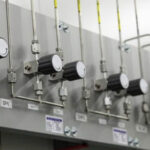
The Art of Demon Slayer: A Journey Through Creativity
“Demon Slayer,” also known as “Kimetsu no Yaiba,” has captured the hearts of fans worldwide. This unique anime and manga series has become a cultural phenomenon. In this article, we will explore the various artistic elements that contribute to its success. From character design to animation techniques, every aspect of “Demon Slayer” is crafted with…














